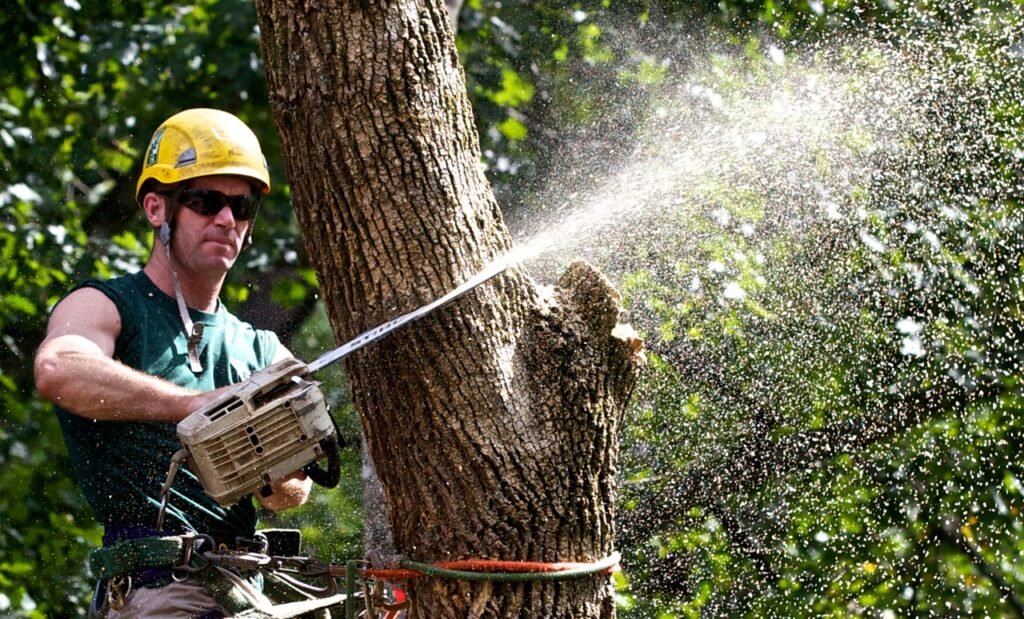Top Arborist Professionals Tree Care Experts For Healthy Landscapes

An arborist, also known as a tree surgeon, is a trained professional who specializes in the care and maintenance of trees. Arborists possess expertise in tree biology, cultivation, and management, enabling them to provide various services to ensure the health and longevity of trees.
Importance Of Trees In Our Environment
Trees play a crucial role in maintaining the ecological balance of our planet. They provide oxygen, filter air pollutants, offer shade, and support biodiversity. Additionally, trees contribute to soil health, prevent erosion, and mitigate climate change by absorbing carbon dioxide.
Purpose Of The Article
This article aims to educate readers about the role and significance of arborists in preserving and enhancing our natural environment. By understanding the responsibilities and services of arborists, readers can appreciate the importance of proper tree care and contribute to sustainable practices.
What Is An Arborist?
Definition And Role
Arborists are professionals trained in the cultivation, management, and study of trees, shrubs, and other woody plants. Their primary role involves assessing the health of trees, diagnosing problems, and implementing appropriate solutions to promote tree vitality and longevity.
Training And Certification
To become an arborist, individuals typically undergo specialized training programs that cover tree biology, identification, pruning techniques, and safety procedures. Certification from reputable organizations, such as the International Society of Arboriculture (ISA), demonstrates competency and adherence to industry standards.
Skills And Expertise
Arborists possess a diverse set of skills, including tree climbing, pruning, and removal techniques, as well as knowledge of soil composition, pest management, and tree risk assessment. Their expertise enables them to address a wide range of tree-related issues effectively.
Why Arborists Are Important
Maintenance Of Tree Health
Arborists play a crucial role in maintaining the health and vitality of trees through regular pruning, fertilization, and pest management. By identifying and addressing issues early, they help prevent tree decline and promote optimal growth.
Tree Preservation And Conservation
In an era of rapid urbanization and deforestation, arborists advocate for the preservation and conservation of trees. They work to protect valuable tree specimens, advocate for tree ordinances, and promote sustainable land management practices to safeguard our natural resources.
Role In Urban Planning And Development
Arborists contribute to urban planning and development projects by providing expertise on tree selection, placement, and care. Their input helps minimize the impact of construction on existing trees and ensures the integration of green infrastructure into urban environments.
Services Provided By Arborists
Tree Pruning And Trimming
One of the primary services offered by arborists is tree pruning and trimming. Proper pruning enhances tree aesthetics, promotes structural integrity, and reduces the risk of limb failure. Arborists employ various pruning techniques to address specific tree needs while adhering to industry standards.
Tree Removal And Stump Grinding
Arborists are trained to safely remove trees that are diseased, damaged, or pose a hazard to property or safety. Additionally, they offer stump grinding services to eliminate unsightly tree stumps and prevent regrowth. Arborists prioritize safety and environmental sustainability when conducting tree removal operations.
Diagnosis And Treatment Of Tree Diseases
Arborists are skilled in identifying common tree diseases and implementing effective treatment strategies to restore tree health. Through careful observation and diagnostic testing, they can pinpoint the cause of tree ailments and prescribe appropriate remedies, such as pruning, fungicide application, or soil amendments.
Emergency Tree Services
In times of natural disasters or severe weather events, arborists provide emergency tree services to mitigate hazards and restore safety. Whether it’s removing fallen trees blocking roadways or stabilizing damaged trees, arborists respond swiftly to protect property and public welfare.
How To Become An Arborist
Education And Training Requirements
Becoming an arborist typically requires a combination of formal education and hands-on experience. Many aspiring arborists pursue degrees or certificates in arboriculture, forestry, or related fields, supplemented by apprenticeships or internships with experienced professionals.
Certification And Licensing
Achieving certification from reputable organizations such as the ISA or Tree Care Industry Association (TCIA) demonstrates competency and professionalism in the field of arboriculture. Some states may also require arborists to obtain licenses or permits to perform certain tree care services.
Career Opportunities
Arborists can pursue various career paths in the arboriculture industry, including tree care companies, municipal forestry departments, botanical gardens, and consulting firms. With the growing emphasis on environmental conservation and urban greening initiatives, the demand for skilled arborists continues to rise.
Safety And Environmental Considerations
Importance Of Safety Measures
Safety is paramount in the field of arboriculture, given the inherent risks associated with working at heights and operating heavy machinery. Arborists undergo rigorous safety training and adhere to industry best practices to minimize accidents and ensure the well-being of themselves and others.
Environmental Impact Of Arboricultural Practices
While arborists strive to promote tree health and sustainability, certain practices may have environmental implications if not executed responsibly. Arborists prioritize eco-friendly techniques, such as proper waste disposal, habitat preservation, and tree planting initiatives, to minimize their environmental footprint.
Sustainable Arboriculture Practices
Arborists advocate for sustainable arboriculture practices that prioritize long-term tree health and ecological resilience. This includes selecting native tree species, practicing integrated pest management, and promoting soil health through mulching and composting. By adopting sustainable practices, arborists contribute to the overall health and vitality of our urban forests.
Frequently Asked Questions About Arborists
What Is The Difference Between An Arborist And A Forester?
While both arborists and foresters work with trees, their roles differ significantly. Arborists specialize in the care and maintenance of individual trees, focusing on health, aesthetics, and safety. Foresters, on the other hand, manage forests and woodlands on a larger scale, addressing issues such as timber production, wildlife habitat, and ecosystem health.
How Often Should Trees Be Pruned?
The frequency of tree pruning depends on various factors, including tree species, age, health, and desired outcomes. Generally, trees benefit from routine pruning every 3-5 years to remove dead or diseased branches, improve structure, and promote vigorous growth. However, specific pruning needs may vary, and it’s advisable to consult with a certified arborist for personalized recommendations.
What Are Some Common Tree Diseases And How Can They Be Treated?
Common tree diseases include fungal infections, bacterial infections, and insect infestations, which can cause symptoms such as leaf discoloration, wilting, or dieback. Treatment options may include pruning affected branches, applying fungicides or insecticides, improving soil drainage, or enhancing tree vigor through fertilization. Early detection and prompt intervention are essential for managing tree diseases effectively.
Conclusion:
Arborists play a vital role in preserving the health, beauty, and functionality of our urban and natural landscapes. Their expertise in tree care and management contributes to environmental sustainability, public safety, and the overall well-being of communities.As stewards of the environment, we all have a responsibility to care for and protect our trees. By supporting arboricultural practices, advocating for tree preservation, and planting trees in our communities, we can ensure a greener, healthier future for generations to come. Let’s work.








